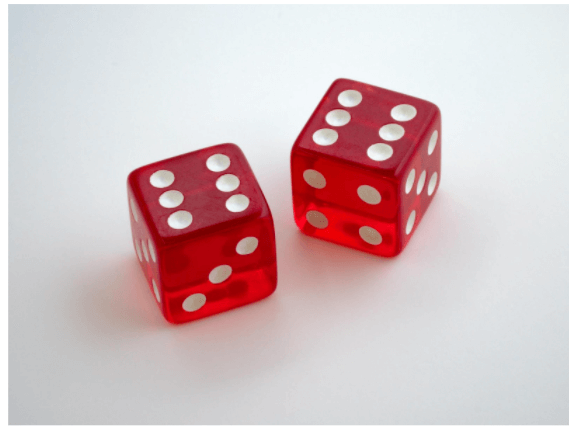Humanity’s desire to predict the future has been manifested over millennia in a variety of methods, including oracular pronouncements, intricate ceremonies to propitiate gods and a lot of superstition. This had very little impact on rational thinking or scientific or mathematical content. Even if one did make records of predictions and compare them with events, there were many ways to ignore inconvenient data. The gods would be offended if you misinterpreted the oracle’s advice.
Consensus bias is a common trap that people fall into. This means that they notice anything that confirms their belief or prediction and ignore anything that doesn’t. Today, they still do it, in hundreds of millions.
Gambling is one example of human activity in which ignoring facts can lead to disaster. There is still room for self-deception. Millions of people still hold incorrect and irrational beliefs about probability. Million more people have a good understanding of the odds and how they mix, which is why bookmakers and gamblers using online casino make more when they are more familiar with probability.
When mathematicians began to consider gambling and other games of chance, particularly the likely long-term behavior, the first real mathematics of probability theory was created. Probability theory’s pioneers had to separate the chaos of superstitions and intuitions from the simple mathematical principles that could be extracted.
The classic gambling device, dice, is the archetypal symbol of chance.
It is not a good idea for scientists or social workers to begin by trying to solve complex scientific and/or social problems. The methods that were available to them at the time weren’t sufficient to forecast weather. Instead, they did what mathematicians do every day: They focused on the simplest examples where the most complexity can be eliminated and it is possible to clearly specify what they are talking about.
Because they are so far removed from the complexity of the real world, these “toy models” can be misunderstood often by others. Toy models have been the basis of many important scientific discoveries throughout history.
A classic gambling device, dice, is the archetypal symbol of chance. The Indus Valley may be the origin of dice. This is possible due to the older use for knucklebones, which are animal bones that were used for fortune-telling as well as playing games. Six-sided dice were found by archaeologists at Shahr-e Sukhte, an ancient Iranian site, which was occupied between 3200 and 1800 BC.
The 2800-2500 BC date of the oldest dice is when they were used for a game similar backgammon. The ancient Egyptians also used dice to play senet, although the rules are not known.
It is not clear if these dice were used to gamble. Although the ancient Egyptians did not have money, they used grain as a currency as part of a complex barter system. Two millennia before, gambling with dice was commonplace in Rome. Most Roman dice are strange. They look almost like cubes at first glance, but nine tenths have rectangular faces and not square. They lack the symmetry that a cube would have, so they are more likely to show up in certain numbers than others.
This is the way dice games are played. Even a small bias can have a significant effect on a long sequence of bets. It was only in the middle 15th century that symmetric cubes became common. Why didn’t Roman gamblers not object to the use of biased dice? Jelmer Eerkens is a Dutch archaeologist, who studied dice and wondered if fate rather than physics might explain it. If you believed your fate was in the hands the gods, you would win when you wanted it to and lose when you didn’t. It would not matter what the shape of your dice was.
Gamblers had gotten wiser by 1450. Most dice were symmetric cubes at that time. The numbers were standardized so it was easier to verify that each number is present. The trick is to swap dice with rigged dice that have certain numbers twice to make them more likely to be thrown. You won’t be able to tell the difference if you place them on opposite sides. You can make some totals impossible by using two dice. There are many other methods to cheat, even with perfectly normal dice.
Some pioneering mathematicians created probability theory by paying more attention to the likelihood that a particular outcome will occur.
Initially, dice had one opposite 2, three opposite 4, and five opposite 6. Because the sums of 3, 7, and 11 are all prime, this arrangement is called primes. Primes were out of fashion around 1600 and replaced by the current configuration: 1 opposite 6, 2, opposite 5, and 3 opposing 4. This is known as “sevens”, because opposite faces always add up to 7. There are two possible forms of primes and sevens. These are both mirror images.
It is possible that gamblers became more rational as dice became more standard and predictable. They stopped believing Lady Luck could affect a biased outcome and began to pay more attention to the probability of any particular outcome happening without divine intervention. They couldn’t have missed the fact that an impartial dice is just as likely to produce any number as any other.
In the end, each one should show up at least as often, if not more. This type of thinking led to some pioneering mathematicians creating a new branch in their field: probability theory.
